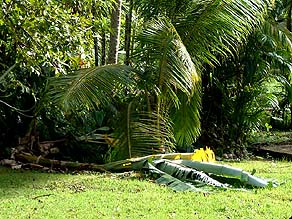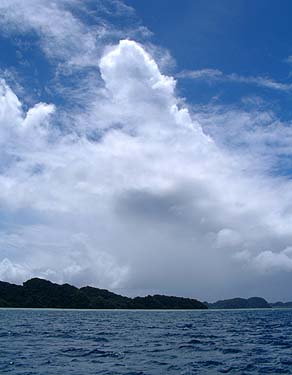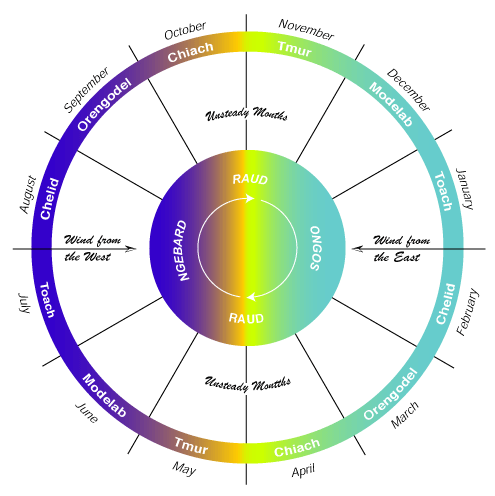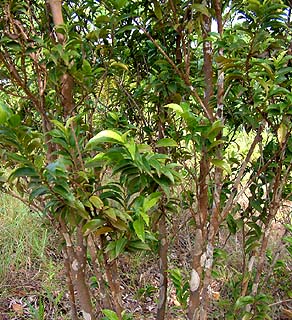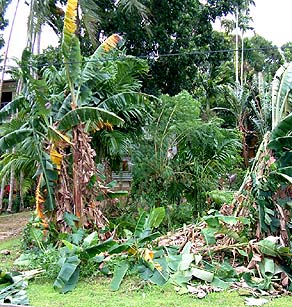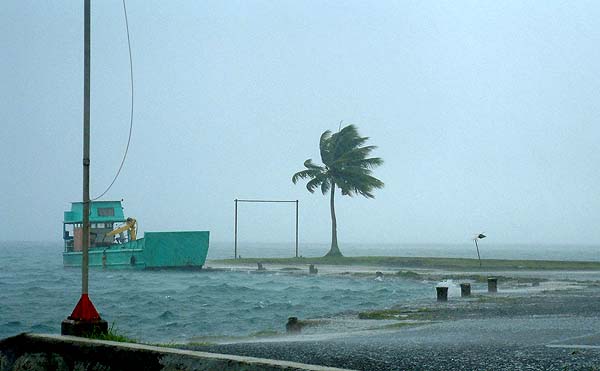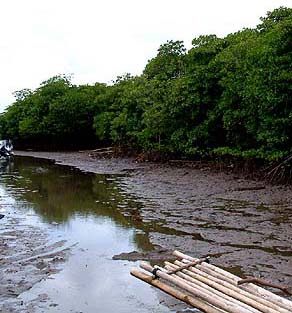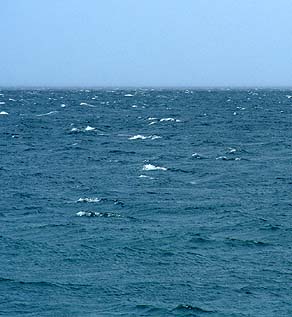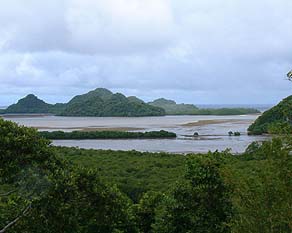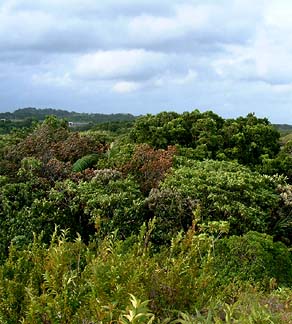 |
 |
 |
 |
||||
|
|
|
|
|
|
|
|
|
|
|
|||||||
|
|
|
|
|
|
"There are two main seasons of wind that we have," Noah explains. "One we call ongós, meaning the ‘way of east,’ that’s the way the wind would be coming from. And then ngebard, that’s when the west wind comes. And in between, that’s what we call ráud, kind of unsteady months of changing from one to the other. The main months for us for the change would be from December, January."
|
||
|
|
||
"In our calendar it’s six months, six months, but broken into four months, four months, and you have the two in between on either end that are sort of unsteady. We have the names for these, and it repeats itself. "During ongós, the wind is expected to be very steady from the east; mainly the north east trade winds would be coming. Then right about middle of April, May you would expect the wind to kind of begin to shift to the west, and to be coming from the west."
|
|
|
"We have this cycle of transition period and steady wind from the west, steady wind from the east and then the transition period in between, which leaves about four months— two months at either end—and that guides our seasons, and guides our tide, and guides our calendar." "So this is the four months in the easterlies which is the ongós, when the wind will be coming from the east and the tides will be low at night, not so low in the morning, then you start with what we call the ráud, and then we have ngebárd, the other season. It’s in the name of the month, so this is like the first month of the westerly wind."
Wind and clouds off the East coast of Airai State. |
|
|
|
|
"During the easterly wind we know how the wind behaves during the day and at night, so the description of the strength of the wind focuses on the difference between the day and night. During the day, it’s blowing hard and at night it drops down. At night it drops down and we say the wind go to sleep at a certain bush called cheskiik, and they say ‘the wind goes to sleep at night at the cheskiik.’ That means that during the day it blows hard. At night it stops blowing except in this bush. You can see it only that bush, the leaves move, for the wind is sleeping there. "So that’s stating that it’s blowing during the day
hard so everybody feels it, but at night only this particular bush can
feel it because the strength is only enough to stir the little bush
and not everything else." Eolt a di mo bad ra cheskiik. "Wind goes to sleep on cheskiik."
|
||
|
|
||
"And the other description of the behavior of the wind is what the Easterly people call the rereek btaches. Sometimes people ask, ‘what’s the wind situation?’ And they will say that term, and that term suggests that maybe people from the west are concerned about the strength of the wind. Is it going to be a storm? Is it wind that we have to worry about? '"And the men would say, 'no this is just rereek btaches,'
meaning it is only stirring the leaves of certain trees—a very
strong tree—so that indicates that the wind is strong, very strong
to make a certain tree make noise. But that’s all it does. It
never goes beyond that." Rereek btaches. Wind strength only rattles the leaves of the btaches.
|
Cheskiik.
|
|
Palau does not lie in Micronesia's Typhoon Alley, though it is affected and occasionally hit by typhoons. But unexpected periods of strong winds do happen. "There is what we call weak typhoon," Masaharu points out. "This typhoon does not do much damage except bringing down bananas. Bananas are the first plants that fall down during the storm—just a little bit of wind and the banana will fall down, so they call it weak storm because only bananas will fall down. "This happens during the unsteady months," Noah adds. "Usually this is kind of a July rain, July or November rain." "The elders know when typhoon season is," Masaharu says, "but nowadays they say, ‘oh we cannot predict anymore'."
|
|
|
|
Storm conditions at Koror's T-dock.
|
“As a fisherman,” Noah elaborates, “you need to know that during the easterlies the biggest low tide may be very early in the morning and at night but not during the day, never during the day, never during the evening. And the westerlies, the big low tide will be evening or during the day but never early morning and never at night. So that’s something that you remember."
|
||
|
|
||
“If it’s an easterly wind you know that the tide during the day would be not a very low tide, but low tides are biggest at night. So we can mark the season by it: if it’s ongós, you know that during the day, there are no big low tides; the big low tides would be at night. And during the westerly season, ngebard, the big low tides are during the day and not much low tides at night. “High tides have a year-round variation. April and October are known to have big, big high tides. At this time the easterly and westerly winds are just opposite of each other. So you get to know that.” |
|
|
"Then you also have to remember the moon. The moon also gives you the tide. If the moon is straight overhead then it’s usually a low tide, very low tide and probably would be coming pretty soon, so it would be low and soon to begin to be coming in. "And when the moon is on the western horizon, then you know it’s high tide and then soon to start to going out. Same way with the moon up here on the eastern horizon. It would be high tide and soon to start the process of going out. "So that’s two things that we learn right from the start. When you feel that the moon will go down and it goes down below, when it hits below, then you know it’s low tide. So in your head you have this cycle."
|
|
|
|
“For the men in the village, you never leave the moon out of your head. People always will know what moon phase it is, how many days after a new moon or how many days after a full moon or how many days before full moon or before new moon. That has to be memorized because it controls your daily rhythm, daily tide. "If someone asks you 'what’s the tide?' and if you didn’t know the moon, you might ask ‘okay, what’s the moon? what’s the moon phase?’ Once you establish the moon phase, then you connect it to the tide and the time of day. So that’s the first thing that you want to know."
|
|
|
“There are different stars that follow the moon in different seasons, and you have to memorize that also. In a given season, certain stars follow the moon or go down or come up at certain times, and that tells you what sort of fishing is good, what sort of season is good, and that also connects to the tree uplands, and the seasons on land. "There are ways of connecting a fruiting tree or flowering tree to a certain season on the sea. That’s something that people memorize, and I know that with a lot of young kids now, that’s the rhythm that they live by when they’re in the village."
|
|
|
|
“Now I think people just want to check the calendar, and they check the tide, and that’s it. That’s all they check, just the tide. Older fisherman, when you have the tide, when you have the moon, then you know the tide, you know the fishing, you know the where to go—you just connect all of this: the type of fishing, whether the fish is fat or not, whether it’s going toward spawning or it’s finished spawning or where would it be at that particular time of the month or the year, because it’s different from month to month and year to year and time of the day and the tide, whether the tide is incoming or outgoing, how they’re feeding, where they’re feeding, or whether they’re schooling or where they should be, and this is basically memorized."
And with the wind comes rain.
|
||
|
|
||
|
|
|
|
|
|

|
| Airai Home | Map Library | Site Map | Pacific Worlds Home |
|
|
|
|

|
|
|
|||
| Copyright 2003 Pacific Worlds & Associates • Usage Policy • Webmaster |
|||

